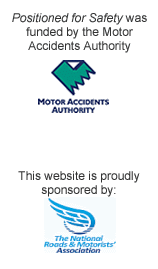Gloves
Motorcycle gloves need to keep your hands warm but not sweaty. They need to be sufficiently robust to provide protection from injuries in a crash without restricting your ability to operate the controls. They need to be designed and fitted to stay on your hands in a crash.
About 30% of motorcyclists’ injuries are to the hands and 23% to the wrists (Otte et al, 1987). Imagine what it is like to lose part or all of the functions of your hands.
If the gloves meet the European Standard they must be marked EN 13594. If not, here are some design features to help guide you in your choice.
Do they cover at least 50 mm beyond the wrist joint and provide impact protection over the knuckle?
How are they fastened? If you just have to pull them on, they can also be pulled off. Gloves must have some sort of wrist strap or other means of locking them on to your wrist. Test the fastening system by getting someone to try to pull the gloves off.
Are they marked as complying to ISO 11642 which is a test of colour fastness in water. This will avoid your hands being stained every time the gloves get wet.
- Do they fit your hand without feeling tight or too loose. Test them by holding a motorcycle handlebar. Then perform the following checks:
- Can you feel and operate ALL the controls and switches?
- Can you adjust your visor?
- Are you aware of any tightness or pressure points, such as at the tips of fingers or from bunching of fabric or padding?
Construction - what to look for
Examine each part of the glove. Features may include armour/padding, multiple layers of material, gel packs, high density foam and finger webbing.
The base of the palm and wrists need to be covered with abrasion resistant material that will withstand sliding on your hands along the road. How is the protective layer attached? Will it rip off at the first contact with the road? What is it made from? Metal studs may protect your gloves better than they protect your skin as they get very hot from friction.
Pre-curved construction means the gloves are shaped with a curved rather than an open flat hand . Such gloves may be more comfortable on long rides because there is less fabric to fold or bunch under your hand.
Vents on the back of the hand allow air flow for cooling, but look at the design. How is the vent positioned and attached to the main protective layer? The vent may also provide a tear point for the main protective layer in a crash.
How are the knuckles protected? e.g. multiple layers of material, Kevlar or polycarbonate plastic.
Any additional layers should be double stitched. Check to ensure that additional layers are stitched on top of the main protective layer, rather than a separate double section that is sewn in. An inserted double section is actually weaker and leaves your skin exposed if it is ripped off.
There should not be any hard seams or other sharp edges such as studs, staples or buckles penetrating the protective layer of the glove. Any additional decorative or safety features may only be attached externally or through additional layers of material.
How are the fingers protected? Your little finger could be the first part of you to hit the road. They can take the full weight of your twisting body and can be wrenched into unnatural positions resulting in permanent damage or amputation. Gloves with webbing between the little finger and the next finger are designed to reduce such injuries.
- Look at the stitching, it should be regular with no dropped stitches as this may lead to seams bursting under pressure, such as in a crash. Seams should be external rather than internal so they do not rub against your skin.

